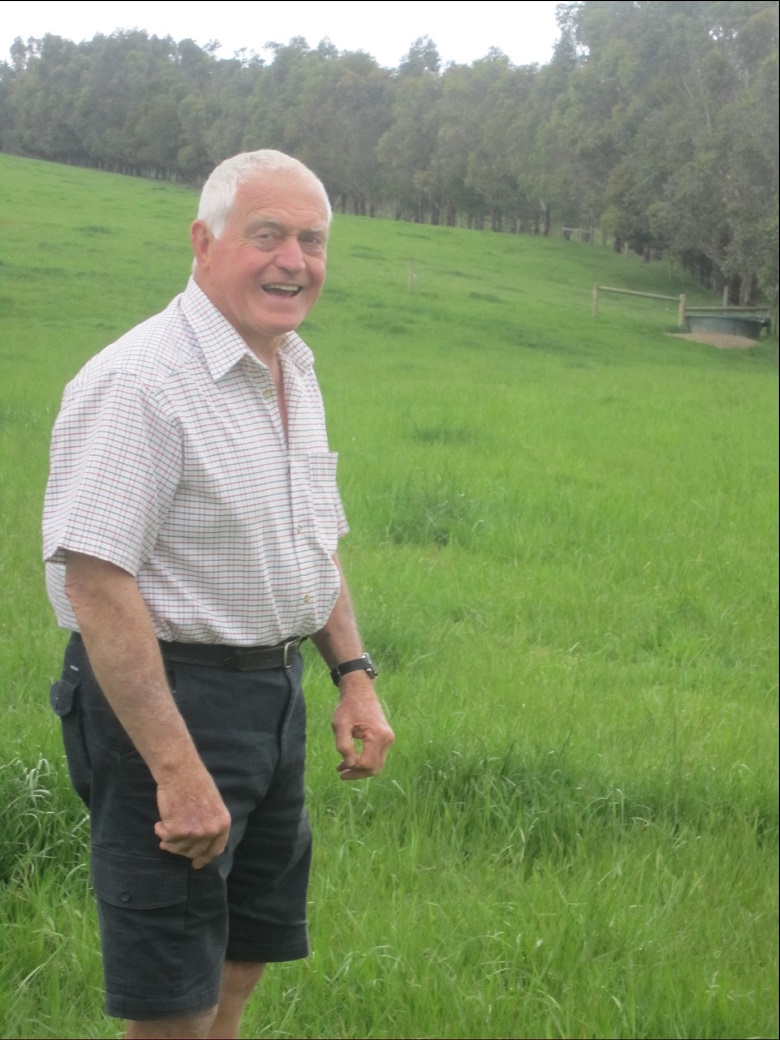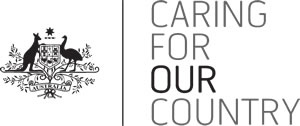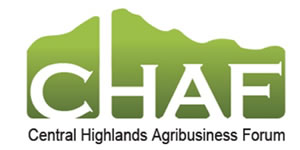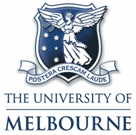Freshwater Creek Caring For Our Country EverGraze Supporting Site (Terry and Mary Cliff)
Comparison of production, persistence and economic benefit of establishing phalaris, perennial ryegrass and tall fescue, and rejuvenating a run-down pasture with fertiliser and management.
Full details of this Demonstration Site can be found in the case study listed below, which includes an economic analysis of returns from rejuvenating or re-sowing phalaris pasture.

Fast Facts
Site Location: Freshwater Creek, Surf Coast, southwest Victoria
Host producers: Terry and Mary Cliff
Site Coordinator: Murray Johns
Duration: 2010-2012
Site focus: To Demonstrate suitable persistent and productive perennial pasture species for the Surf Coast region, aiming particularly to provide winter feed under reduced and variable rainfall. Deep rooted perennials were selected to improve ground cover, assist in reducing erosion, lower the water table and minimise nutrient runoff. Another aim of the site was to demonstrate how to establish perennial pastures through direct drilling techniques, how to identify improved perennial pasture species and to promote the benefits and management needs of deep rooted perennial pastures.
The Farm
Rainfall: 520mm
Enterprises: Self Replacing Belted Galloway stud, Spring Calving
Farm area: 64 ha
Soils and landscapes on the farm: Flat to slightly undulating, soil type varies from sandy loam to clay loam.
The Site
The Demonstration Site is located on one of the major roads of the region. The host farmer has long been practicing rotational grazing and has many paddocks subdivided and sown to deep rooted perennial species (including lucerne), to facilitate this.
The site chosen was what Terry described as his “problem paddock”, the only paddock left that was not already subdivided, where he had had limited success sowing pasture in the past. After a number of very dry years, the pasture was degraded and consisted of sparse perennial species such as old fescue and phalaris, some lower value annual grasses, little clover, numerous broadleaf weeds, and significant areas of bare ground. The paddock was a long narrow paddock along a creek, with some minor variation in soil type across the site. The soil was a clay loam.
Treatments
The site was fenced into 4 paddocks, varying in size from 1.4 to 2.4 ha. One paddock was chosen at random to remain the control site. This paddock had some perennial species, and was “topped up” with clover (Urana and Trikkala 3kg of each), along with 90 kg/ha MAP. The remaining three paddocks were allocated randomly to one of the following:
- Full pasture renovation using glyphosate, followed by direct drilling of Resolute winter active tall fescue (15kg/Ha) and sub clovers (Urana and Trikkala 3kg of each).
- Full pasture renovation using glyphosate, followed by direct drilling of Holdfast phalaris (4kg/Ha) and sub clovers (Urana and Trikkala 3kg of each).
- Partial pasture renovation using paraquat and diquat, followed by direct drilling of Camel perennial ryegrass (15kg/Ha) and sub clovers (Urana and Trikkala 3kg of each).
All pastures were sown on the same day, although two different seeders were used, one tyne, one disc, to demonstrate direct drilling of pasture to producers. All pastures were sown with a starter fertiliser (90kg/Ha MAP).
Broadleaf weeds continued to be a problem on the site and were controlled through spot spraying (Feb 2011), and a broad acre application (April 2012). Super Potash 2 and 1 was applied in September 2011 at a rate of 150kg/Ha across all treatments, as was the host producers standard practice.
Measurements
- Pasture condition – availability (kg/ha), composition, ground cover, perennial species persistence (basal cover)
- Spring dry matter yield via hay cut
- Grazing days DSE/ ha/ day
- Soil testing
- Expenses – capital and variable costs
Key Results
Direct drilling is a great method for establishment or renovation in this soil type but requires suitable preparation. Unfortunately with time constraints placed on the Cliff’s to establish the site, they were forced to rush the process, in contrast to their usual preparation and this showed in the resulting pasture performance.
Table 3 shows the production (as hay and grazing) achieved from the control, phalaris and tall fescue paddocks for the two years post-establishment. The ryegrass did not persist well at all, so these results were left out of Table 3.
To estimate total production, the hay yield was converted from tonnes per hectare to Dry Sheep Equivalent (DSE) per hectare by assuming one DSE would require 1.2 kg of hay per day, with some allowance for moisture and wastage.
This allowed a fair comparison of all the treatments, with some interesting results. On grazing alone the fescue appeared to have performed poorly in 2011, but when hay production was taken into account, it was not far behind the control paddock. Production for the control paddock exceeded the phalaris and the fescue paddocks when hay cut and grazing management were included.
Establishment of the perennial species was less than desirable. Clover retention was better in the tall fescue pasture than any other. The fescue paddock was always grazed out quickly probably due to its quality and palatability from the higher clover content.
Table 3: Annual pasture production for the trial paddocks.
| Control (rejuvenate) | Phalaris | Fescue | |
| 2010 | 4.8t/ha hay (Equiv. 11.3DSE/ha) |
2.6t/ha hay (Equiv. 6.1 DSE/ha) |
2.1t/ha hay (Equiv. 4.9 DSE/ha) |
| 2011 | 7.1dse/ha + 1.6t/ha hay Total = 10.9 DSE/ha |
10.1 dse/ha + 1.4t/ha hay Total = 13.6 DSE/ha |
4.3 dse/ha + 2t/ha hay Total = 9.1 DSE/ha |
| 2012 (to June) | 3 DSE/ha | 0 | 0 |
A cumulative net cash flow analysis was performed to compare the peak debt and payback period of establishing new phalaris pastures to establishing a new one. For both, the payback period was slow (more than 10 years). The rejuvenating option had lower peak debt and returned to positive slightly quicker. Although it seems more affordable, it is less productive in the long term. Both investments had estimated returns on capital of 13% or more, so were considered good investments if the investment is affordable.
Lessons learnt
Terry believes it was the control paddock that taught them the most on the Demonstration Site, as it showed that although perennial species may be old cultivars, they will persist through most seasonal conditions. “If they are then given appropriate fertiliser, weed control and grazing management, they will achieve the desired pasture composition and level of production at a much lower cost than re-sowing,” Terry said.
“The other interesting result from this comparison from my point of view was the performance of the phalaris paddock. Phalaris has had a bad reputation in this district in the past for issues such as becoming uncontrollable and for providing poor feed quality. I now see that when managed correctly, it can be a good species to consider for my property to provide pasture species diversity.
“Having a variety of different perennial pastures on the farm, such as phalaris for winter production, and deep-rooted lucerne for summer production, can assist in avoiding feed gaps throughout the year.”
Acknowledgements
Thank you to Terry and Mary Cliff for hosting the site. This site was supported by Caring for Our Country, Central Highlands Agribusiness Forum and Future Farm Industries CRC through the National EverGraze Project.




